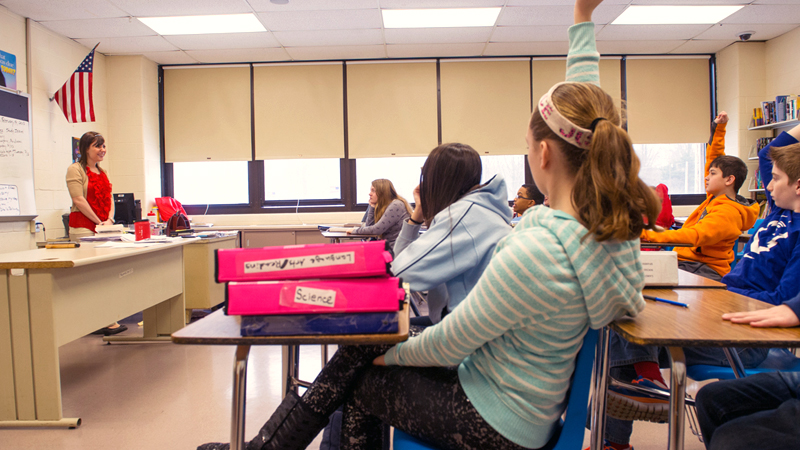
With the winter holiday season upon us, it’s common for teachers to feel overwhelmed. Classroom schedules are interrupted by school assemblies and special events; students are distracted by the excitement and stress the holidays can bring. Plus school vacations, and in many parts of the country weather delays and cancellations, can make it even more difficult for teachers to keep students engaged and focused on learning.
But the season doesn’t have to be a whirlwind of chaos. By adjusting lesson plans and channeling excess energy, teachers can maintain classroom productivity! Here are some strategies middle school teachers use to help students stay engaged and focused on learning during the winter holiday season.
The winter holidays can be an exciting and overwhelming time for junior high students. I make sure I greet each student by name and make eye contact as they enter the classroom. This allows me to gauge their emotional state and readiness to learn. I can see who may need some reinforcing and who may need reminding as the class unfolds, just by this quick 3- to 5-second interaction.
Maintaining a predictable routine is comforting for students who may be overstimulated or saddened by the upcoming holidays. I also embed more brain breaks to either calm the class or get them moving. I jot down three to four I can use each day depending on the mood of the class. Switch is one energizer [from Refocus and Recharge: 50 Brain Breaks for Middle Schoolers] I can use with students as a whole group (standing or sitting) to get their energy out so they can refocus on the learning tasks at hand. The students love to “switch on” both sides of their brain to increase learning!
I also make a concentrated effort to state the routines and procedures I see being followed. This serves as a positive reminder for the students and helps me stay in a positive frame of mind.
It’s sometimes surprising how many students get anxious during this time of year. So during the winter holiday season, I give them three journaling choices during Advisory, only one of which has to do with the holidays. That way, all students have the chance to share personal stories. Plus, giving students options allows for some fun free-writing, which can promote creativity.
Since student behavior can get disruptive during this time, I schedule frequent Advisory meetings with the goal to “reset.” After a long weekend or school vacation, I come into the room completely silent and give students a reflection sheet. The focus of the reflection is either academic (meeting classroom expectations), social (helping a friend in need), or a combination of the two. These help students quickly settle in and refocus their energies on learning while also strengthening the classroom community. After I collect the reflection sheets, I anonymously read them out loud. Students nod or shake their heads, laugh, giggle, give thumbs up—it’s very revealing. Then, as a class, we come up with ideas to give action to their reflections.
To keep students focused as winter break approaches, I give assignments that are related to what we’re working on but that also spread cheer. For example, we create cards for soldiers who are not able to be home for the holidays. Students find great joy in creating these cards, and some students create multiple cards by hand.
Another thing that I incorporate into learning is having students create special menus based on the foods that their families eat during this season. The menus have to mimic actual restaurant menus, including the name of the dish and a detailed description. Once each student has created and designed their menu, they present it to the class and pass it around so that others can see their creativity. Then I have students bring in a favorite dish from their menu. This way everyone is able to sample the warmth and joy that particular dish brings as they learn about other cultures and traditions.
Read more about how you can support your students during this exciting time of year with “Everything You Need to Know to Prepare Students for Winter Break.”
Christine Diaz, Kim Eiseman, and Amber Searles contributed to this article.